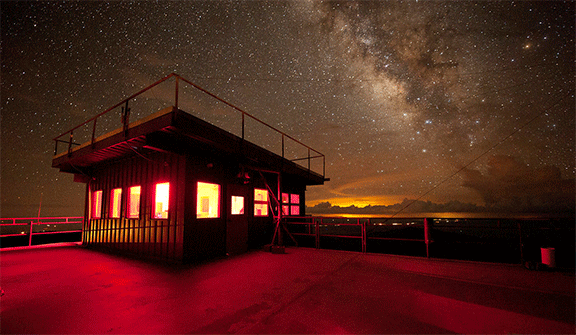Atlas Obscura Publishes Extended Feature on Langmuir Laboratory
September 17, 2020
Atlas Obscura -- the Brooklyn-based adventure and travel website -- recently published an extended feature about NMT's Langmuir Laboratory, the nation's premiere lightning research facility. Writer Elizabeth Miller interviewed director Dr. Harald Edens and professor emeritus Bill Rison and other scientists.
The article includes rarely-seen images of the laboratory, the region, lightning, and people who have worked at the lab.
Here is an excerpt of the article with a link to Atlas Obscura at the bottom:
Can America’s Premier Lightning Lab Revive Its Renegade Spirit?
 As a thunderstorm boils up into the mountains of central New Mexico, the researchers at Langmuir Laboratory are
checking their rockets, climbing into a steel bunker below the launch pad, and waiting
for the right moment to fire into the clouds, hoping that lightning will strike back.
From the glass cupola of a control tower about a mile away, Langmuir staff scan the
nearby trails for hikers, and signal a five-minute window to the bunker crew.
As a thunderstorm boils up into the mountains of central New Mexico, the researchers at Langmuir Laboratory are
checking their rockets, climbing into a steel bunker below the launch pad, and waiting
for the right moment to fire into the clouds, hoping that lightning will strike back.
From the glass cupola of a control tower about a mile away, Langmuir staff scan the
nearby trails for hikers, and signal a five-minute window to the bunker crew.
“Everything has to fall in place perfectly—the storm has to be overhead, everyone has to be ready, and the storm has to build an electric field,” says Harald Edens, director of the atmospheric research facility.
The researchers in the bunker then radio back a five-second countdown. On “Go!” one of them blows into a pneumatic switch that fires the rocket overhead, which is tethered to the launch pad by a steel wire. Watchers in the control tower see a thread of smoke and (if all goes well) a searing jolt of lightning, forking from the ground up into the clouds. Thunder crackles or buzzes, as most of the rumble rolls away. The radio from the bunker transmits excited shouts.
High-speed cameras record the strike at 6,000 frames per second. Played back, the action spans several seconds instead of fractions of a second. Black-and-white images show lightning branching through the sky off this bare peak where, since 1963, scientists have been provoking, measuring, and photographing thunderstorms to better understand how they work.
But it has been six years since anyone triggered lightning at Langmuir. The cutting-edge facility, a seeding ground for lightning researchers, has struggled to secure funding and assemble the many pieces that must align to a trigger a strike. Still, Edens, who became director last year, is striving to renew the lab ...
Click here for the full article